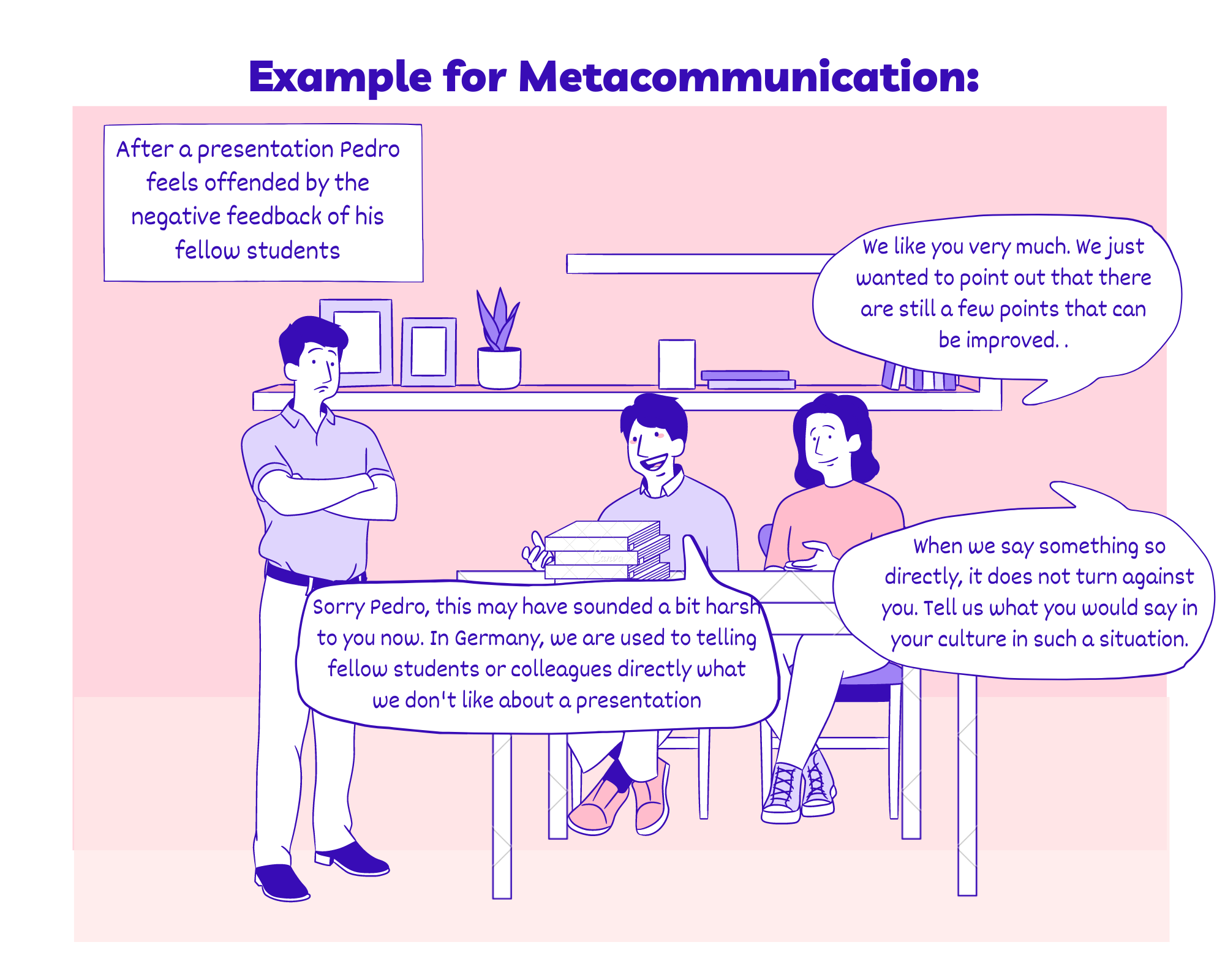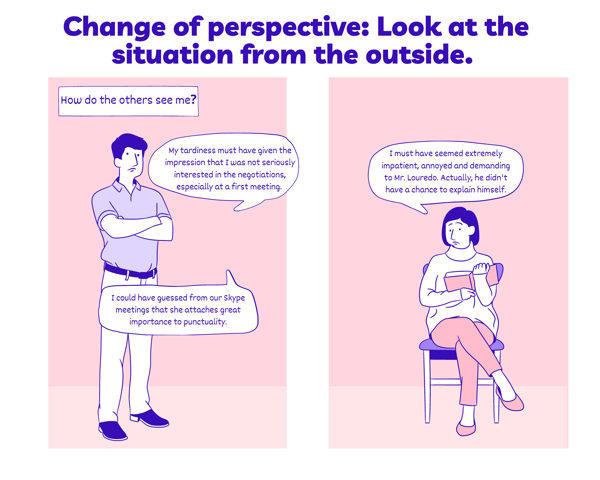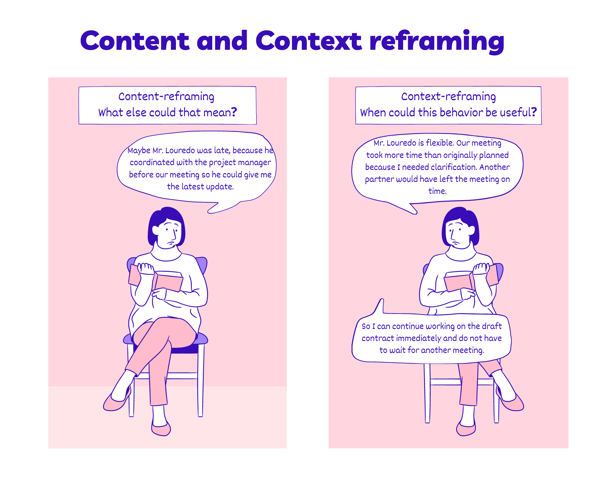Chapter 3: Intercultural Competences
| Site: | elearning.feaa.uaic.ro |
| Course: | Confident Open Modules |
| Book: | Chapter 3: Intercultural Competences |
| Printed by: | Guest user |
| Date: | Saturday, 23 November 2024, 11:16 PM |
1. Introduction to Intercultural Competences
Experience of an international student in Brasilia
When you go to a pub in Brazil with your friends to drink a little and talk, there is a big difference when it comes to paying the bill. I'm used to it from Germany that when drinking in a pub, everyone drinks their own beer. In Brazil, the beer is sold in 600-ml bottles and is thus filled into small glasses for the entire group. And that's not all: no matter how much you drink, at the end of the evening the bill is split by everyone with an equal share!
Source of information: (Berninghausen 2012)
2. Definition of Intercultural Competences

3. Three Levels of Intercultural Competence
What qualities do managers need in order to turn implicit cultural conflicts into explicit ones?
Intercultural learning is divided into similar areas by most researchers. While A. Thomas uses the attributes affectiveness, cognition and behaviour (cf. Müller and Gelbrich, 2004, p. 794), Hofstede describes intercultural competence as a process of three levels: awareness, knowledge and skills (cf. Hofstede, 2001).

- Self-discovery (emotional or affective)
- Transmitting information (cognitive)
- Behavioural training (actional, behavioural)
On the affective level, an awareness process has to set in, so you can recognise your own cultural bias and put it into perspective. Awareness first and foremost means that you need to be aware of the fact that your own culture is bound by prejudice and norms. This includes the recognition that the environment in which you were raised in is just as valid for you as it is for those who were programmed with another set of "software". There is no objective truth; every culture has found its own unique solutions of how to deal with difficulties and how to solve its problems. You need the ability to empathise, to tolerate ambiguity and to endure contradictory situations, as well as respect for differing viewpoints and a curiosity for new challenges.

Cognitive level
The cognitive level includes knowledge about the foreign culture, language, regional and cultural conventions, politics, history as well as various values and norms. At the same time, this level also includes an understanding of various patterns of cultural value systems (such as, for instance, the varying polarities of organisational cultures), which make it easier to classify differences.
This knowledge also includes all forms of perception, thoughts, values and actions that are seen as obligatory by the majority of the members of a particular culture. Cultural anthropologists like Hall, Hofstede, Lewis and Trompenaars have created classification systems for intercultural differences that can be used for recognising patterns in intercultural experience (cf. Unit 2 "Cultural Dimensions").

Behavioural level
Finally, the behavioural level requires the ability to use awareness and knowledge in practice. Use your skills by utilising techniques of meta-level communication and active listening (cf. Unit 3 "Communication, Prejudice and Racism") as well as the skills to switch perspectives and re-frame situations in a new way (in this Unit). An essential condition for competence in acting interculturally is the readiness and ability to deal with the "foreign" in an appreciatively way (cf. Unit 2 "Cultural Dimensions" for cultural dimensions and square of values).

Major source of information: Berninghausen Hecht-El Minshawi 2015
4. Avoiding Misunderstandings
- How do we appreciatively interact? The most important techniques for an appreciative interaction are metacommunication
- active listening
- role distance and
- change of perspective
- reframing




5. Intercultural Confidence Scale

6. Online Activity

7. Self Assessment
For this activity, please follow the link: Intercultural Strategic Competence Scale
8. Individual Reflections
Homework - Individual Reflections
1. Can you give an example where you feel that you personally reacted in an intercultural sensitive way, referring to the ethno-relative stage of cultural sensitivity?
Output: comment to this post or
post a podcast or a short video
Answer here
2. Have you ever witnessed a situation where somebody acted in a very incompetent way in an intercultural setting?
Output: comment to this post or post a podcast or a
short video
Answer here
3. Can you provide an example you witnessed where somebody used meta-communication as a tool to better understand a person of different cultural origin?
Output: comment to this post
or post a podcast or a short video
Answer here
9. Additional Information & Literature
Bennett, M.J., Towards Ethnorelativism: A Development Model of Intercultural Sensitivity. In R. M. Paige (Hrsg.). Cross Cultual Orientation: New Conceptualizations and Applications, University Press of America, Inc., Lanham, MD 1986
Berninghausen, Kammler, Gunderson, Kühnen, Schönhagen, Lost in Transnation, Towards an Intercultural Dimension on Campus, Bremen 2009
Berninghausen J., Hecht-El Minshawi, B., Interkulturelle Kompetenz, Managing Cultural Diversity, Trainingshandbuch, Frankfurt 2007
Berninghausen, J., »Management im interkulturellen Kontext«, in: Berninghausen, J., Kuenzer, V., Wirtschaft als Interkulturelle Herausforderung, IKO, Frankfurt 2006
Berninghausen J., Der Spagat zwischen Reproduktion und Überwindung von Klischees – praktische Vermittlung interkultureller Kompetenz für angehende Manager an der Hochschule Bremen, in: Interculture Journal, 2006/1, Jena
Birnstiel, K., Auf dem Laufsteg der Diskurse, FAZ, 27. Juli 2011
Cox, T., Beale, R. L., Developing Competency to Manage Diversity. Berret-Koehler: San Francisco 1997
Deardorff, D. K., Interkulturelle Kompetenz – Schlüsselkompetenz des 21. Jahrhunderts? Thesenpapier der Bertelsmannstiftung auf Basis der Interkulturellen Kompetenz-Modelle von Dr. Darla K. Deardorff, Bertelsmann Stiftung, 2006, Online: http://www.bertelsmann-stiftung.de/cps/rde/xbcr/SID-6D284854-7B6A142F/bst/xcms_bst_dms_17145_18254_2.pdf [09.07.09].
Dilts, R. B., Effective Presentation Skills, Meta publications 1994
Dilts, R. B., Kommunikation in Gruppen und Teams, Paderborn 1997
Geertz, C., »Dichte Beschreibungen. Bemerkung zu einer deutenden Theorie von Kultur«, in: Dichte Beschreibung, Frankfurt/Main 1983
Hammer, M. R., Bennett, M. J. & Wiseman, R., Measuring intercultural sensitivity: The intercultural development inventory.,International Journal of Intercultural Relations, 27, 421–443, 2003
Hofstede, G., Bond, M. H., The Confucius connection: From cultural roots to economic growth, Organisation Dynamics 16, 1988
Hofstede, G., Culture’s consequences: International differences in work related values, Sage, London 1980
Hofstede, G., Lokales Denken, globales Handeln, Kulturen, Zusammenarbeit und Management, Verlag C. H. Beck, München 1997
Institut für Interkulturelles Management (Hg.), Interkulturelles Personalmanagement, Gabler, Wiesbaden, 1994
Löhr, A., Entwicklung eines Fragebogens zur Interkulturellen Sensibilität, unveröffentlichte Diplomarbeit, Universität Bremen 2010
Schiffmann, J., Interkulturelle Kompetenz und interkulturelle Kommunikation in Theorie und Praxis. Theoretische Fundierung und Konzeptentwurf für ein interkulturelles Assessment, unveröffentlichte Magisterarbeit, Universität Bremen 2009
Schulz von Thun, F., »Psychologische Vorgänge in der zwischenmenschlichen Kommunikation«, in: Fittkau, B., u. a., Kommunizieren, lernen und umlernen, Trainingskonzeptionen und Erfahrungen, Aachen 1989
Schulz von Thun, F., Miteinander reden: 1, Stile, Werte und Persönlichkeitsentwicklung, Reinbek bei Hamburg 1981
Schulz von Thun, F., Miteinander reden: 2, Stile, Werte und Persönlichkeitsentwicklung, Reinbek bei Hamburg 2006
Thomas, A., Interkulturelle Kompetenz. Grundlagen, Probleme und Konzepte. Erwägen – Wissen – Ethik 14 (1), Stuttgart 2003
Hammer, M. R., Bennett, M. J., & Wiseman, R. (2003). Measuring intercultural sensitivity: The Intercultural Development Inventory. International Journal of Intercultural Relations, 27(4), 21–443. DOI: 10.1016/S0147-1767(03)00032-4 .
Löhr, A. (2010). Entwicklung eines Fragebogens zur Interkulturellen Sensibilität. [Diplomarbeit, Universität Bremen].
Löhr A. (2012). Messung Interkultureller Sensibilität: Veränderte Sichtweisen durch interkulturelle Trainings und Auslandsaufenthalte im Internationalen Studiengang Global Management. In J. Berninghausen (Ed.), AußenEinsichten. Interkulturelle Fallbeispiele von deutschen und internationalen Studierenden aus dem Auslandsjahr (pp. 57-70).